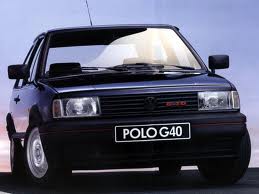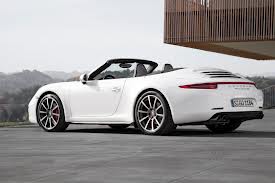


This edition of the Toyota Celica GT Four ST185 is the 5 speed / Manual version and was first brought out in 1989. This was at around the same time as the introduction of the 1989 Ferrari F40 LM Competizione 2.9 V8 Twin Turbo and the 1989 Dodge Viper 8.0L V10.This particular Toyota Celica has a 1998cc Turbo Petrol powerplant with 4 cylinders in a St formation.
The Celica shares its Petrol St4 engine configuration with the likes of the 2019 Ariel Atom 4 2.0 Turbo and the 2013 Caterham 7 620 R 2.0 L Supercharged. If you're looking for other fast cars which share the Celica's All Wheel Drive, Coupe combination then how about the or the .
Weighing in at 1520 kgs (3351 lbs) this makes the Toyota Celica GT Four ST185 in the same weight category as the 2022 Ferrari 296 GTS Assetto 3.0 V6 Twin Turbo Hybrid or the give or take 50kg.
In terms of power the 1998cc 16V St4 engine produces 201 bhp (149 kW) @ 6000 rpm similar to the 2020 Audi TT S Turbo 50 TFSI (225 bhp) or the 2020 Audi A1 Sportback 40 TFSI S tronic S line (197 bhp).
The Turbo St4 throws out 203 lb-ft (275.2 Nm) @ 3200 rpm placing it with cars of similar torque performance figures such as the 2020 Abarth 695 70th Anniversario 1.4 Turbo (184 lb-ft) or the 2020 Audi A1 A1 Sportback 35 TFSI S tronic S line (184 lb-ft).
If one combines the weight with power or torque performance for the Toyota Celica you can get a better idea of it's real world performance.
![Lotus Elise Club Racer - [2011] image Lotus Elise Club Racer - [2011] image](/editionimages/1567.jpg)
The 2011 Lotus Elise Club Racer (157.2 bhp per ton) has similar Bhp Per Ton stats as the Toyota Celica.
The Toyota Celica has a Power to weight ratio of 132.2 bhp per ton and 133.5 lb-ft per ton. Bhp Per Ton figures of the 1989 Celica competing with the 2011 Lotus Elise Club Racer (157.2 bhp per ton) or the 2012 Subaru BRZ 2L (157.2 bhp per ton).
If you agree with the late great Carroll Shelby then arguably an even better indicator of potential performance, Torque. Use weight as well and you end up with - Torque per ton, with the Toyota Celica generating around 133.5 lb-ft per ton. If you're curious as to what other cars have as much torque to weight then look no further than the 1974 Lamborghini Urraco 3.0L V8 P300 (158.5 lb-ft per ton) or the 2003 Subaru Impreza WRX - Blobeye (158.4 lb-ft per ton).
With a 0-60mph time of 7.50 secs or a 0-100km/h (0-62mph) of 7.7 secs, this made the Toyota Celica GT Four ST185 as fast as the 2020 Audi A1 A1 Sportback 35 TFSI S tronic S line (7.50 secs) the 2019 Ford Focus ST 2.0 EcoBlue Wagon (7.50 secs) the 2017 Volkswagen-VW Golf GTD Variant 2.0 TDi DSG (7.50 secs) the or the 2017 Subaru Forester 2.0 XT Premium (7.50 secs). This Toyota Celica GT Four ST185 is also faster than the 2013 BMW i3 0.6l Hybrid (7.60 secs) the 2011 Fiat Punto Evo Abarth 1.4 Turbo (7.60 secs) the 2011 Abarth 500C 1.4 Turbo (7.60 secs) the and the 2010 Peugeot 308 1.6 GTi (7.60 secs).
When talking about the performance of the Toyota Celica on the drag strip it can reach a quarter mile in an estimated 15.45 secs @ 88.5 mph. Similar performance down the quarter mile can be found with the the 2006 Dodge Charger 5.7 V8 R/T (15.38 secs), the 2000 Mitsubishi FTO 2.0 GPX (15.39 secs), and the 1968 Alpine A110 1300 (15.40 secs).
Modern performance cars are often artificially restricted to 155mph. The 1989 version of the Toyota Celica GT Four ST185 has a maximum speed of 140mph.
If maxing out your car on the AutoBahn is your thing and you're wondering what's faster than the 1989 Toyota Celica GT Four ST185 then how about the 2020 Lotus Elise Cup 250 1.8 Supercharged (151 mph), the 2013 Volkswagen-VW Polo R WRC 2.0 Turbo (151 mph), or the 2006 Volkswagen-VW Golf GTi Edition 30 DSG (151 mph).










Ferrari 330 GTS
Engine: Naturally Aspirated Petrol | 3967cc 24v V12
Top Speed: 146 mph
0-60mph: 6.90 seconds

Porsche 911 Carrera 4S Cabriolet 991
Engine: Naturally Aspirated Petrol | 3800cc 24v F6
Top Speed: 296.1 kph
0-100kph: 4.8 seconds



















